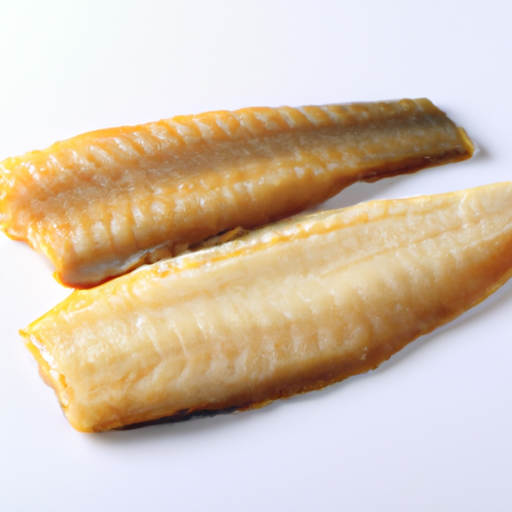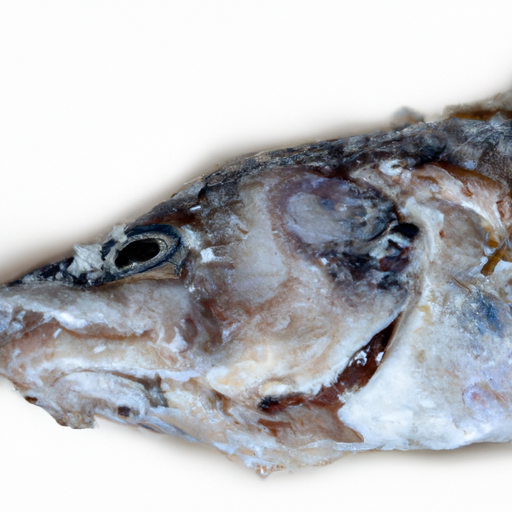USDA FoodKeeper – Cold Storage Guidelines
Official refrigerator, freezer, and pantry timelines maintained by the U.S. Department of Agriculture.
Visit USDA FoodKeeperDeliciously mild and versatile, fresh cooked pollock is a seafood favorite that can elevate any meal while providing a healthy protein boost. However, with a shelf life of just two days in the fridge, it's essential to enjoy this tasty catch promptly to avoid potential food safety risks. Always check for signs of spoilage before diving in!
30 most common foods with instant answers. Print it and stick it on your fridge—completely free! Want more? Upgrade to the complete guide with 70+ foods.
"According to USDA guidelines, cooked Pollock should be refrigerated within 2 hours of cooking and consumed within 3-4 days for optimal quality and safety."


Fridge
32°F (0°C)
Store in airtight container on a tray to catch drips
2 days
90 days
Unpleasant fishy odor, slimy texture, discoloration
Can be used in fish soups, stews, or fish cakes
Cod or haddock fillets
The expiration date on fresh cooked Pollock indicates the date by which it should be consumed to ensure safety and quality. Beyond this date, there is a higher risk of spoilage and bacterial contamination. The best quality of Pollock, however, refers to the peak flavor and texture of the fish. While it is safe to consume Pollock past the expiration date if it has been stored correctly, the quality may decline, affecting taste and texture.
To tell if Pollock Fresh Cooked has gone bad, look for any signs of discoloration, such as a grey or brown hue, an off-putting fishy smell, or a slimy or overly mushy texture. If you notice any of these indicators, it's best to discard the Pollock as it may no longer be safe to consume.
When it comes to fresh cooked Pollock, the main food safety concern is the risk of bacterial contamination. Bacteria such as Salmonella, Listeria, and Vibrio can multiply rapidly in seafood if not stored properly or if it is left out at room temperature for too long. To minimize the risk of foodborne illness, it is crucial to handle and store Pollock safely.
To store fresh cooked Pollock properly, it is recommended to refrigerate it promptly at temperatures below 40°F (4°C) to slow down bacterial growth. Store Pollock in an airtight container or wrapped tightly in plastic wrap to prevent exposure to air and odors in the fridge. Consume cooked Pollock within 3-4 days for the best quality. If freezing, ensure proper packaging to prevent freezer burn and consume within 2-3 months for optimal taste.
Pollock is a popular fish in many cultures around the world. In the United States, Pollock is commonly used in dishes like fish tacos, fish sticks, and fish sandwiches. In Japan, Pollock roe (known as mentaiko) is a delicacy often enjoyed with rice or as a topping for sushi. Pollock is also a key ingredient in Surimi, a type of fish paste used in making imitation crab meat.
If Pollock Fresh Cooked has been at room temperature for a few hours, it's best to discard it. Bacteria can rapidly multiply at room temperature, increasing the risk of foodborne illness. To ensure safety, always refrigerate seafood promptly after cooking or purchasing.
Leftover Pollock Fresh Cooked should be consumed within 2 days of opening. After this period, the risk of bacterial contamination increases significantly, even if stored in the fridge. If you're unable to finish it within 2 days, consider freezing the leftovers for later consumption.
The type of container can impact the shelf life of Pollock Fresh Cooked. Opt for airtight containers to prevent exposure to air, which can accelerate spoilage. Glass or BPA-free plastic containers are ideal for maintaining freshness. Avoid storing seafood in metal containers as they can react with the food.
It's recommended to store Pollock Fresh Cooked separately from other seafood in the fridge to prevent cross-contamination. Seafood releases natural juices that may harbor bacteria, potentially contaminating other items. Keep Pollock Fresh Cooked in a sealed container on a separate shelf to maintain food safety.
Freezing Pollock Fresh Cooked can alter its texture upon thawing. Seafood may become slightly mushy or lose some of its original firmness after freezing. To minimize texture changes, consider using the frozen Pollock Fresh Cooked in dishes like soups, stews, or casseroles where texture alterations are less noticeable.
Shelf life can vary between different brands of Pollock Fresh Cooked due to variations in processing methods and preservatives used. Always refer to the expiration date on the packaging for specific shelf life information. It's crucial to follow storage and handling instructions provided by the manufacturer for optimal freshness.
Cooking Pollock Fresh Cooked can extend its shelf life by killing harmful bacteria and pathogens present in raw seafood. Once cooked, Pollock Fresh Cooked can be safely stored in the fridge for up to 2 days. Ensure proper cooking temperatures are reached to guarantee seafood safety and quality.
Pollock Fresh Cooked typically lasts longer in colder temperatures like winter compared to summer. Warmer temperatures in summer can accelerate bacterial growth and spoilage, shortening the shelf life of seafood. During hot weather, it's crucial to store Pollock Fresh Cooked in the fridge promptly to maintain its quality.
When transporting Pollock Fresh Cooked for a few hours, ensure it stays within a safe temperature range. Use a cooler with ice packs to keep the seafood cold during transit. Pack the Pollock Fresh Cooked in sealed containers to prevent leaks and cross-contamination with other foods. Once you reach your destination, refrigerate the seafood promptly.
30 most common foods with instant answers. Print it and stick it on your fridge—completely free! Want more? Upgrade to the complete guide with 70+ foods.
Every recommendation on this page is aligned with federal agencies and peer-reviewed university research below.
Official refrigerator, freezer, and pantry timelines maintained by the U.S. Department of Agriculture.
Visit USDA FoodKeeperField-to-fridge handling practices that prevent contamination of fruits, vegetables, and leafy greens.
Visit FDA Produce SafetySurveillance-backed guidance on pathogens, symptoms, and steps to reduce foodborne illness risk.
Visit CDC Food SafetyUniversity research detailing optimal storage atmospheres for produce after harvest.
Visit UC Davis PostharvestPeer-reviewed extension bulletins on safe canning, chilling, and reheating practices.
Visit Penn State ExtensionNeed deeper reading? Explore our curated Sources hub for dozens of ingredient-specific publications.
Scan your food directly and get instant safety info using our AI-powered camera feature.
Grains & Pasta
View expiration date and storage guide →
Herbs and Fresh Produce
View expiration date and storage guide →
Meat & Poultry
View expiration date and storage guide →
Herbs and Fresh Produce
View expiration date and storage guide →
Dairy Products
View expiration date and storage guide →
Fruits & Vegetables
View expiration date and storage guide →
Dairy Products
View expiration date and storage guide →
Meat & Poultry
View expiration date and storage guide →
Dairy Products
View expiration date and storage guide →
Important: These are general guidelines based on authoritative sources listed above. Always use your best judgment and when in doubt, throw it out. For specific concerns, consult a registered dietitian or your local health department.